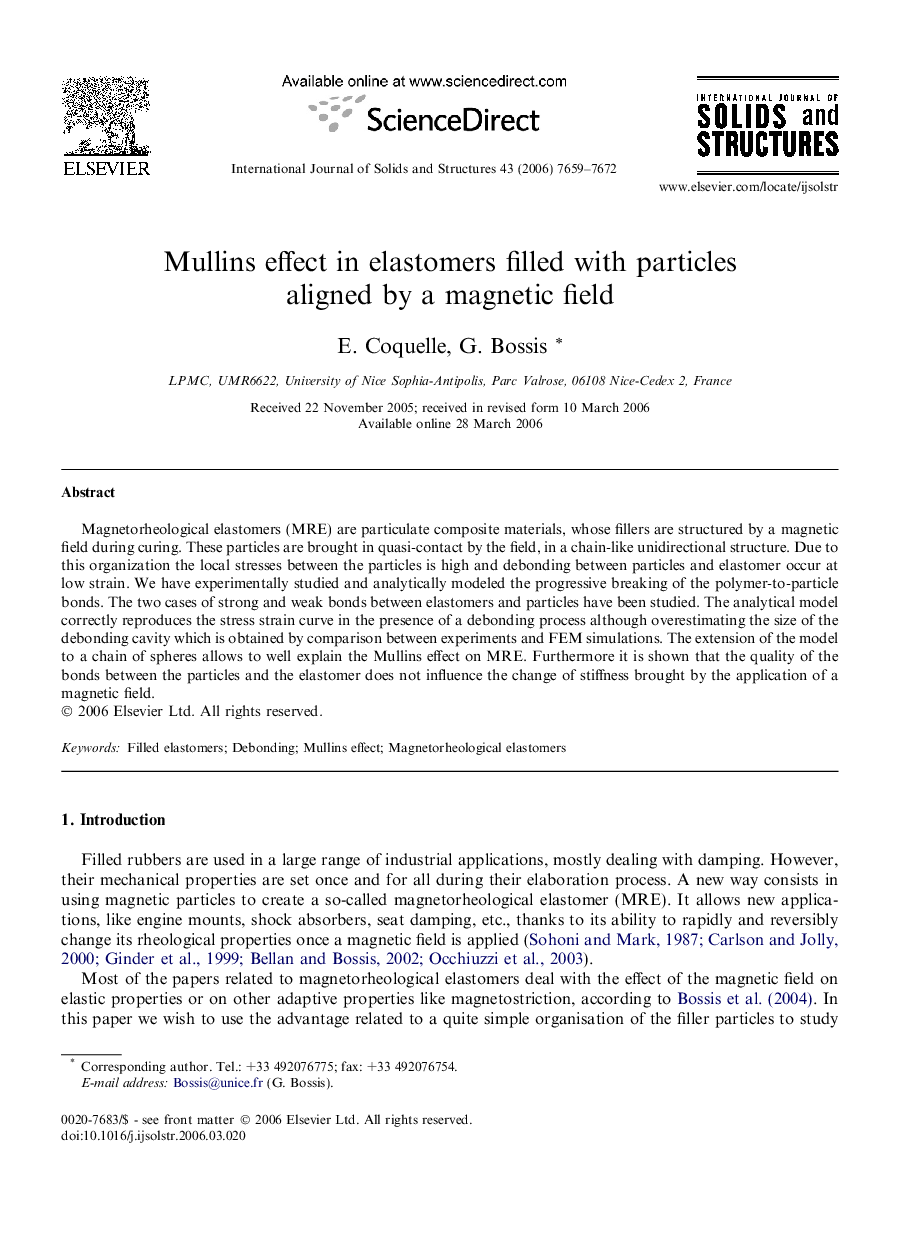| Article ID | Journal | Published Year | Pages | File Type |
|---|---|---|---|---|
| 280024 | International Journal of Solids and Structures | 2006 | 14 Pages |
Magnetorheological elastomers (MRE) are particulate composite materials, whose fillers are structured by a magnetic field during curing. These particles are brought in quasi-contact by the field, in a chain-like unidirectional structure. Due to this organization the local stresses between the particles is high and debonding between particles and elastomer occur at low strain. We have experimentally studied and analytically modeled the progressive breaking of the polymer-to-particle bonds. The two cases of strong and weak bonds between elastomers and particles have been studied. The analytical model correctly reproduces the stress strain curve in the presence of a debonding process although overestimating the size of the debonding cavity which is obtained by comparison between experiments and FEM simulations. The extension of the model to a chain of spheres allows to well explain the Mullins effect on MRE. Furthermore it is shown that the quality of the bonds between the particles and the elastomer does not influence the change of stiffness brought by the application of a magnetic field.
